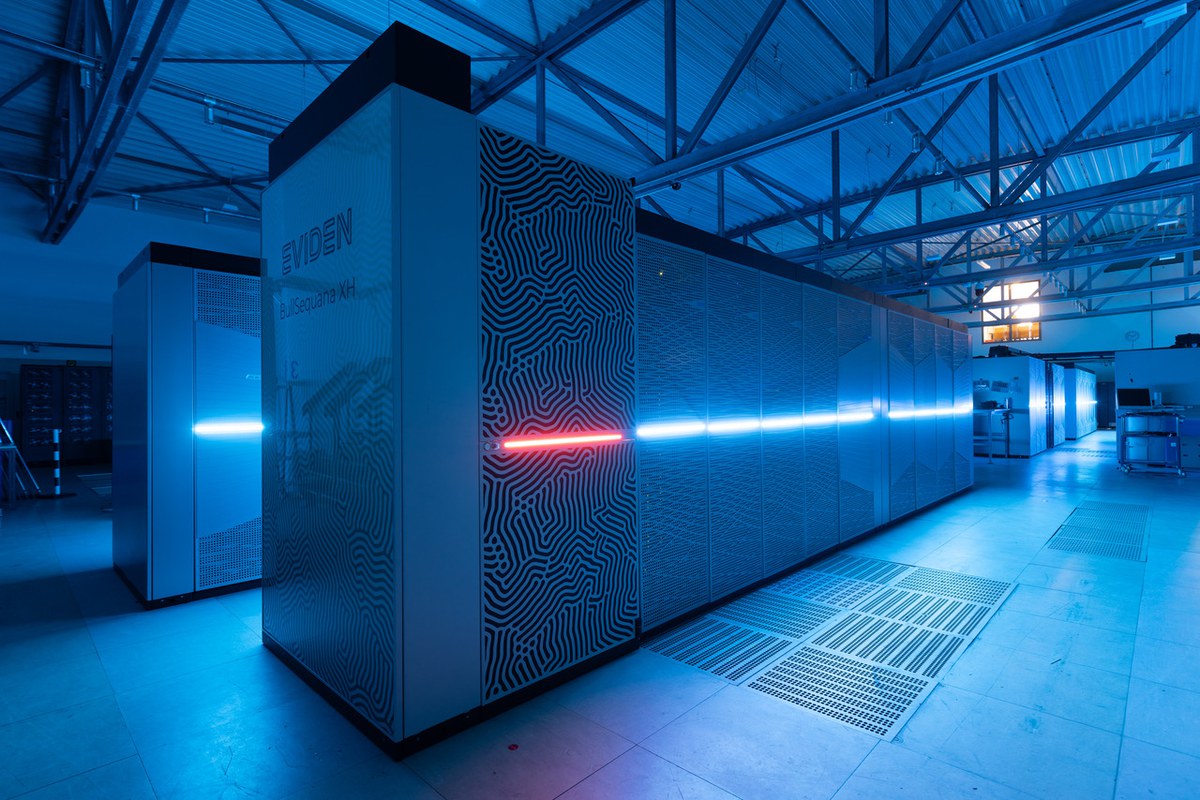JUPITER Sets New Energy Efficiency Standards with #1 Ranking on Green500
The first module of the exascale supercomputer JUPITER, named JEDI, is ranked first place in the Green500 list of the most energy-efficient supercomputers worldwide, as announced at the current International Supercomputing Conference (ISC) in Hamburg. The JUPITER Exascale Development Instrument, installed in April by the German–French consortium, has the same hardware as the JUPITER booster module, which is currently being built at the JSC.
The rapid pace of digitalisation and the increasing use of artificial intelligence requires an increasing amount of computing power and, in turn, energy. Therefore, energy-efficient computing has become increasingly important in recent years.
The JUPITER supercomputer procured by the European supercomputing initiative EuroHPC Joint Undertaking is a true pioneer in this field. The first module installed in April, the JUPITER Exascale Development Instrument (JEDI), is capable of 72 billion floating-point operations per second per watt. In contrast, the previous leader achieved around 65 billion.
The decisive factor for the module’s outstanding efficiency is its use of graphics processing units (GPUs) and the fact that it is possible to optimise scientific applications for calculations on GPUs. Today, virtually all leading systems on the Green500 ranking rely heavily on GPUs, which are designed to perform calculations with much greater energy efficiency than conventional central processing units (CPUs).
The JEDI development system is one of the first systems in the world to use the latest generation of accelerators from NVIDIA: the NVIDIA GH200 Grace Hopper Superchip, which combines the NVIDIA Hopper GPU and the NVIDIA Grace CPU on a single module. Based on Eviden’s latest BullSequana XH3000 architecture, the system includes its highly efficient hot water cooling system, Direct Liquid Cooling, which requires significantly less energy than conventional air cooling, and allows the heat generated to be reused downstream.
The JUPITER precursor JEDI already has the same equipment as the subsequent JUPITER booster module. Scientists are able to access the hardware at an early stage of development as part of the JUPITER Research and Early Access Program (JUREAP) in order to optimise their codes. In doing so, they are supported by experts from the Jülich Supercomputing Centre.

The JUPITER Exascale Development Instrument (left, orange) at the the Jülich Supercomputing Centre. Copyright: Forschungszentrum Jülich / Ralf-Uwe Limbach
JUPITER exascale supercomputer
JUPITER is set to be the first supercomputer in Europe to surpass the threshold of one exaflop, which corresponds to one quintillion
(“1” followed by 18 zeros) floating-point operations per second. The final system will be installed in stages in the second half of this year, and will initially be made available to scientific users as part of the early access programme before it goes into general user operation at the beginning of 2025.
JUPITER development system JEDI
The JUPITER development system JEDI is much smaller than the final exascale computer. It consists of a single rack from the latest BullSequana XH3000 series, which currently contains 24 individual computers, known as compute nodes. These are connected to each other via four NVIDIA Quantum-2 InfiniBand switches and will be complemented with 24 additional computing nodes over the course of May.
During measurements for the Green500 ranking of the most energy-efficient supercomputers, the JEDI system achieved a computing power of 4.5 quadrillion floating-point operations per second, or 4.5 petaflops, with an average power consumption of 66 kilowatts. During optimised operation, the power consumption was reduced to 52 kilowatts.
The final JUPITER system as well as JEDI’s funding is provided half by the European Union via EuroHPC, and the other two quarters by the German Federal Ministry of Education and Research (BMBF) and the Ministry of Culture and Science of the state of North Rhine-Westphalia (MKW-NRW) through the Gauss Centre for Supercomputing (GCS).
Read the detailed press release from Forschungszentrum Jülich here.
Further information can be found in the interview: Background and outlook with Prof. Dr. Dr. Thomas Lippert.
